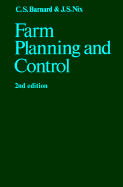Book contents
- Frontmatter
- Contents
- Notice to readers
- Preface to the first edition
- Preface to the second edition
- Selected metric conversion factors
- Part I The organisation of resources
- Part II The organisation of enterprises
- 6 An introduction to enterprise organisation
- 7 Livestock yield and fixed costs
- 8 Yield, variable costs and optimal feed conversion
- 9 The selection of feedstuffs
- 10 The influence of season on livestock production
- 11 The provision of replacements
- 12 Crops and cropping
- Part III The combination of enterprises
- Part IV The control of resources and enterprises
- Selected further reading
- Index
12 - Crops and cropping
Published online by Cambridge University Press: 01 June 2011
- Frontmatter
- Contents
- Notice to readers
- Preface to the first edition
- Preface to the second edition
- Selected metric conversion factors
- Part I The organisation of resources
- Part II The organisation of enterprises
- 6 An introduction to enterprise organisation
- 7 Livestock yield and fixed costs
- 8 Yield, variable costs and optimal feed conversion
- 9 The selection of feedstuffs
- 10 The influence of season on livestock production
- 11 The provision of replacements
- 12 Crops and cropping
- Part III The combination of enterprises
- Part IV The control of resources and enterprises
- Selected further reading
- Index
Summary
Crop costing
To many people the economics of crop production is associated almost entirely with crop enterprise costing. The latter is illustrated in Table 12.1, the example being an above-average crop of maincrop potatoes. The costs are classified first by operations and materials and secondly by factors of production. Such costings are normally required as a necessary basis for price negotiations where government guarantees are operating or where contract prices are being fixed. Furthermore, if trends over time are considered, they do give some broad idea, together with normalised returns, of how the general profitability of the crop is changing. However, for reasons explained in detail in Chapter 20 (pp. 537–9), such costings have little relevance for the purposes of individual farm planning. Many of the costs can only be allocated arbitrarily, especially the general farm overheads, and cropping changes are unlikely to result in profit changes in the way suggested by these figures. Of special importance would be the effect of such changes on the total labour bill, as determined by seasonal requirements and the proportion of hired and family labour.
To illustrate from Table 12.2, suppose Farmer A has a 40-hectare arable farm with 5 hectares of sugar beet. He gets a rather poor yield and his costs are high. Consequently complete costings show the crop making a loss of £30 per ha.
- Type
- Chapter
- Information
- Farm Planning and Control , pp. 260 - 278Publisher: Cambridge University PressPrint publication year: 1980



